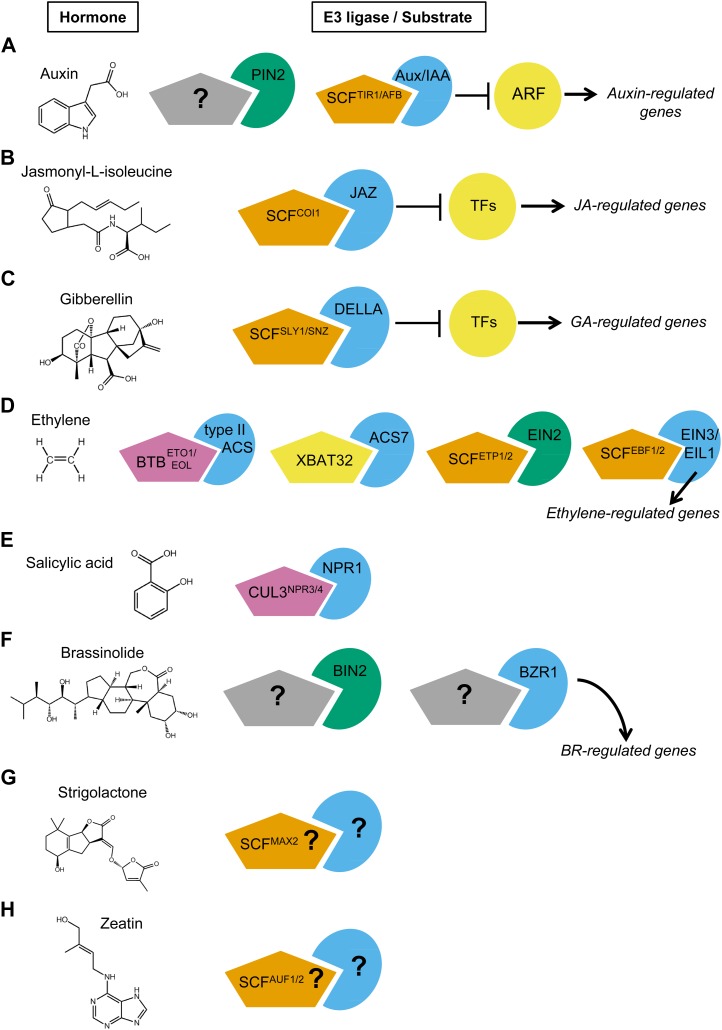Figure 1.
Conserved and diverse UPS degradation mechanisms control hormone signaling (ABA is considered separately due to the abundance of UPS components; see Fig. 2). SCF-type E3 ligases are shown as orange pentagons, RING-type ligases are shown as yellow pentagons, and CRL3-based ligases are depicted as pink pentagons. Unknown ligases are in gray, with a question mark. Known (or unknown) target proteins are shown in blue (transcription factors) or green (kinases and transporters) pie wedges. Transcription factors that are directly bound by SCF target substrates are shown as yellow circles. A, An auxin efflux carrier, PIN2, is degraded in a ubiquitin-dependent manner. In the presence of high auxin concentrations, SCFTIR1/AFB E3 ligases direct the degradation of Aux/IAA transcriptional repressors, releasing bound ARF transcription factors and thus inducing auxin-mediated transcription. B, In the presence of JA-Ile, SCFCOI1 directs the degradation of JAZ transcriptional repressors, releasing bound transcription factors and thus inducing JA-mediated transcription. C, Nucleus-localized growth-repressive DELLA proteins are targeted for degradation by SCFSLY1/SNZ E3 ligases in response to GA perception. D, Ethylene biosynthesis enzymes are degraded by the proteasome. Type-II ACS proteins are targeted by BTBETO1/EOL, while ACS7 is ubiquitylated by XBAT32. In the absence of ethylene, ETP1/2 directs the degradation of the membrane-bound protein EIN2. Degradation of the ETHYLENE INSENSITIVE3 (EIN3) transcription factor is controlled by EBF1 and EBF2 and is inversely correlated with ethylene levels. Thus, as ethylene levels rise, both EIN2 and EIN3 accumulate and ethylene-regulated transcription is stimulated. E, In the absence of SA, the transcription factor NPR1 is targeted for degradation by the NPR4 CUL3-based ligase. The presence of SA reduces the affinity of CUL3NPR4 for NPR1 and thus allows the accumulation of NPR1 and induced resistance. F, Two key components of BR signaling, BIN2 kinase and the transcription factor BZR1, are targets of regulated proteolysis in response to BR via unknown ligase activity. G, The F-box protein MAX2 has been implicated in SL signaling. H, AUF1 may control levels of a cytokinin (represented here by kinetin) response regulator.

